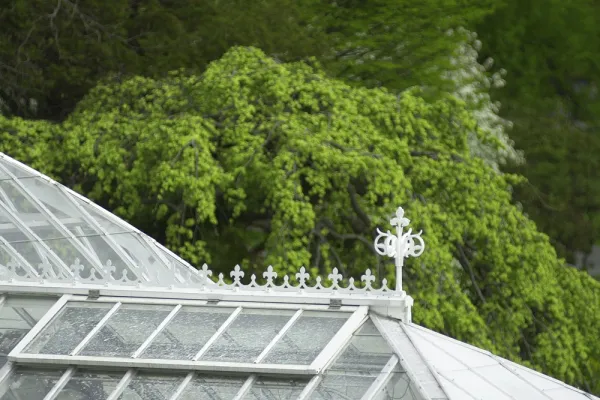‘Making Space’: The Smith Landscape
Sustainability

Published February 22, 2019
This is the final week for an exhibit at Lyman Plant House that captures the unique chronology of the campus landscape while connecting past, present and future.
“Making Space: The Changing Landscape of Smith College,” on display in the Church Exhibition Gallery through Sunday, June 30, illustrates how Smith’s landscape has evolved from an initial 13 acres in 1871 to 147 acres today.
The display walks viewers through the designs of many landscapers—including the famous Olmsted father-son duo (Frederick Law Olmstead and his stepson, Charles)—who helped shape the campus. And it features fascinating archival photographs that illustrate key moments in the evolution of Smith’s environment.
“Making Space” grew out of a Summer Research Fellowship Program project by Krista Smathers ’18 on the history of landscape design at the college.
Smathers—who is now working on a master’s degree in city planning at the University of Applied Sciences Potsdam, Germany—hopes the new exhibit will offer viewers a deeper sense of Smith history, while also demonstrating “that the past plays a central role in planning for the future.”
A historic photo of the Botanic Garden greenhouse and potting shed, courtesy of the Smith College Archives.
The past and the present are interwoven in the display.
Interpretive panels draw viewers to the gallery’s windows—ordinarily shuttered to reduce light pollution and protect the gallery displays—for sweeping views of Paradise Pond, the athletic fields and surrounding paths. An interactive component invites visitors to pin their favorite spots or memories on an oversized campus map.
“We ask people to reflect on their relationship to the campus today,” says Sarah Loomis, manager of education at the Botanic Garden. “Hopefully students and members of the Smith community—as well as the greater local community—will come and share some thoughts and memories.”
Those reflections will be added to an archival project the Spatial Analysis Lab launched in 2014, which asked students, alumnae and community members to share their favorite places on campus.
“I spent many contemplative, happy hours in Capen’s ‘secret’ garden,” said an alumna from the 1980s who responded to the SAL project. “The tall hedges and the fact that no one was ever there made it feel secret.”
Another Smithie marked a tree on Seelye Lawn as a favorite spot, noting, “I especially loved the European Copper Beech; I called it ‘the faery tree.’”
The SAL project archive—where responses from the new “Making Space” exhibit will be collected—is available online.